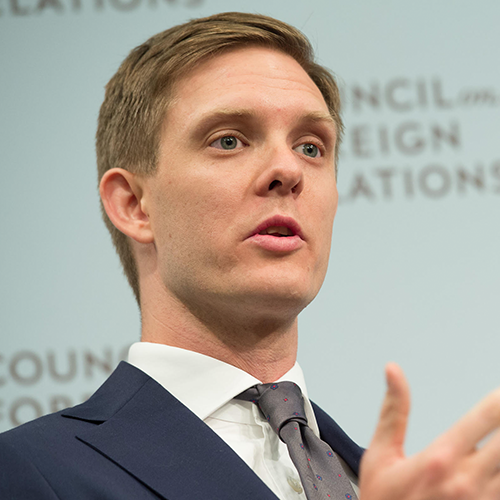
Deterrence,
North Korea
Adam Mount, Ph.D. is a former Senior Fellow and Director of the Defense Posture Project at the Federation of American Scientists, where his work covered U.S. nuclear strategy and force structure, conventional deterrence, and progressive foreign policy. Previously, he was a Senior Fellow at the Center for American Progress and a Stanton Nuclear Security Fellow at the Council on Foreign Relations.
In 2015-16, he directed the CFR Independent Task Force on U.S. Policy Toward North Korea, a group of seventeen experts chaired by Adm. Mike Mullen and Sen. Sam Nunn. He now directs, with Andrea Berger, the FAS International Study Group on North Korea Policy, a group of twelve emerging experts from allied countries working to develop a sustainable strategy to manage a nuclear-armed North Korea.
Dr. Mount’s other writing has been published by Foreign Affairs, The Atlantic, Survival, Democracy, and other outlets. He is a contributor to Axios Expert Voices. His analysis is regularly cited by The New York Times, The Washington Post, The Wall Street Journal, Politico, AFP, AP, and Reuters, and he has appeared on CNN, MSNBC, BBC, NPR, and CNBC. He has testified before the House Armed Services subcommittee on strategic forces.
Dr. Mount teaches an annual graduate seminar in nuclear strategy at the George Washington University and previously taught international ethics at Georgetown University. He holds a Ph.D. and M.A. from the Department of Government at Georgetown and a B.A. from Reed College.
How the United States responds to China’s nuclear buildup will shape the global nuclear balance for the rest of the century.
In early November 2024, the United States released a report describing the fourth revision to its nuclear employment strategy since the end of the Cold War and the third since 2013.
On 27 October 2022, the Biden administration finally released an unclassified version of its long-delayed Nuclear Posture Review. Here’s what you need to know.
For more than a decade, Washington has struggled to prioritize what it calls great power competition with China — a contest for military and political dominance. President Biden has been working hard to make the pivot to Asia that his two predecessors never quite managed. The landmark defense pact with Australia and Britain, AUKUS, that […]
Read the full report PDF here. Summary Depending on how it is defined, sole purpose could have transformational effects on nearly every aspect of nuclear weapons policy or relatively modest effects. It could accommodate or incorporate a range of related policy options, like a deterrence-only posture or no first use. In January 2021, President Biden […]
How can US officials assure allies that Biden’s sole purpose policy will increase their security, not decrease it?
The primary deterrence challenge facing the United States today is preventing aggression and escalation in limited conventional conflicts with a nuclear-armed adversary.
The debate over whether North Korea could be deterred was eclipsed by the onset of negotiations in 2018. Yet, the last three years have been marked by rapid advancements in the regime’s military capabilities and apparent evolution in its military strategy, which now relies on the threat of preemptive attacks against allied conventional forces to […]
In 2018, Russia and China both tested an uncommon type of missile that flew a ballistic trajectory but could be launched from an aircraft. Air-launched ballistic missiles (ALBM) are just one curiosity at a time when many countries are rapidly expanding and upgrading their missile inventories, but the tests raised some understandable questions: Is this […]
The FAS International Study Group on North Korea Policy convened to develop a strategy toward a North Korea that will in all likelihood remain nuclear-armed and under the control of the Kim family for the next two decades. The composition of the group reflects a conviction that a sustainable and realistic strategy must draw on […]
Two USAF B-1B Lancer bombers fly alongside a JASDF F-2 over the East China Sea, October 21, 2017. Photo: PACAF, http://www.pacaf.af.mil/News/Photos/igphoto/2001830673/ By Adam Mount As the Trump administration has prioritized North Korea, it has expanded military exercises around the peninsula to attempt to coerce the regime and assure US allies in Seoul and Tokyo. Perhaps […]